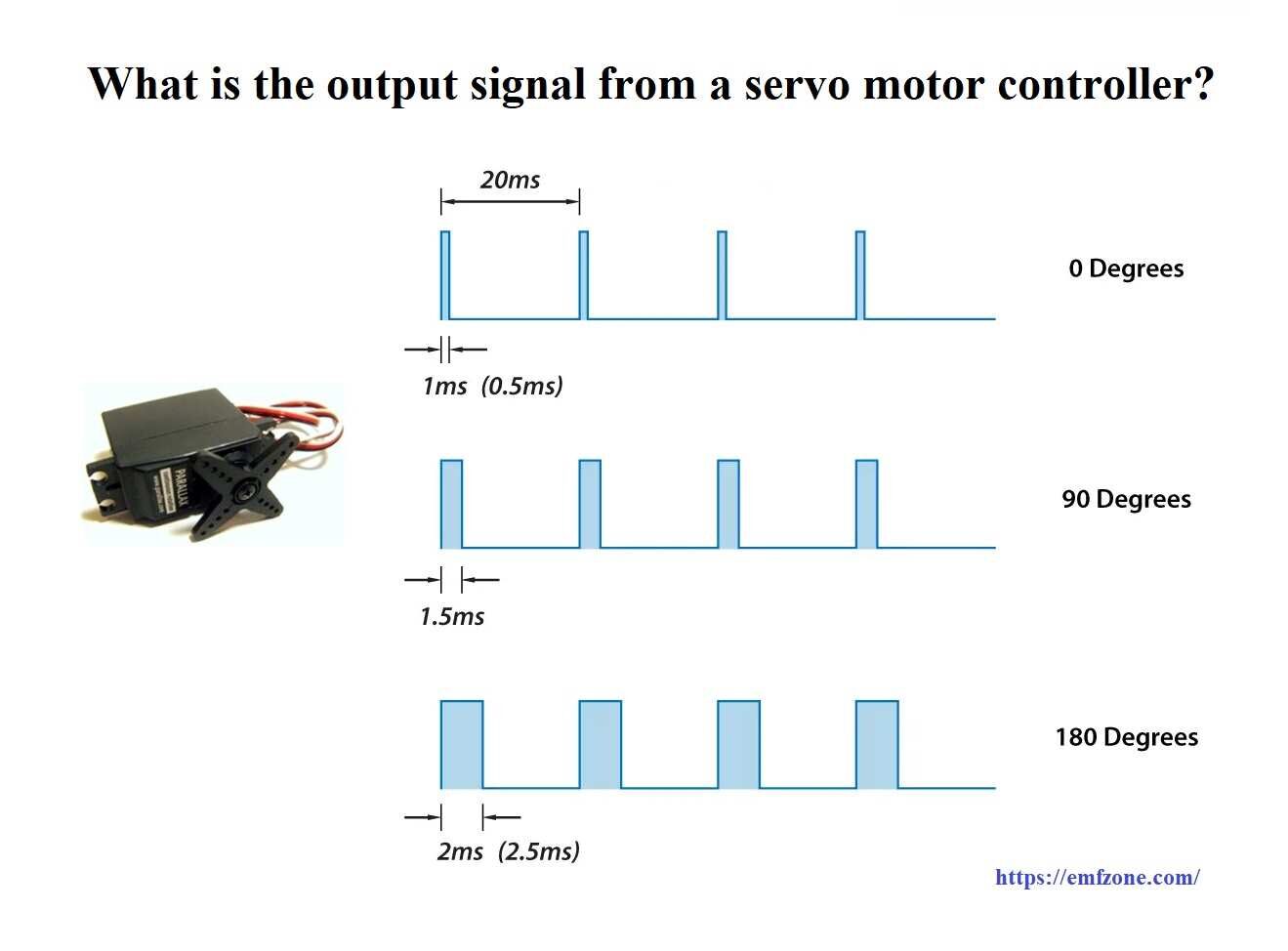Answer:
The output signal from a servo motor controller is a pulse-width modulation (PWM) signal. This signal consists of a series of pulses with varying widths, where the width of each pulse corresponds to the desired position of the servo motor’s output shaft. The servo motor interprets these pulses and adjusts its position accordingly.

Reasoning:
Servo motors are commonly used in various applications where precise control of position or angular velocity is required. The servo motor controller generates a PWM signal to communicate with the servo motor. The width of the pulses within the signal determines the position the servo motor should reach. This method allows for accurate and controlled movement, making servo motors suitable for tasks such as robotics, automation, and remote control systems.
FAQs
Q: What is PWM?
A: PWM stands for Pulse-Width Modulation. It is a method of encoding information in the width of pulses in a signal.
Q: How does a servo motor interpret PWM signals?
A: The width of the pulses in a PWM signal instructs the servo motor about the desired position.
Q: Can a servo motor controller output other types of signals?
A: Generally, servo motor controllers primarily generate PWM signals due to their effectiveness in position control.
Q: What determines the accuracy of a servo motor system?
A: The accuracy is largely influenced by the resolution and stability of the PWM signal.
Q: Are servo motors used only for position control?
A: While position control is common, servo motors can also be employed for velocity and acceleration control.
Q: How does a servo motor controller handle feedback?
A: Many servo systems incorporate feedback devices such as encoders to ensure accurate position control.
Q: Can multiple servo motors be controlled simultaneously?
A: Yes, multiple servo motors can be controlled independently by utilizing separate channels on the servo motor controller.
Q: What applications commonly use servo motor controllers?
A: Robotics, CNC machines, automated manufacturing, and remote-controlled devices often rely on servo motor controllers.
Q: How does the pulse width affect the speed of a servo motor?
A: The duration of the pulses in the PWM signal correlates with the desired speed of the servo motor.
Q: Can a servo motor controller operate without an external power supply?
A: No, servo motor controllers require an external power source to function.
 Electrical Engineering World Wiring a Brighter Tomorrow!
Electrical Engineering World Wiring a Brighter Tomorrow!